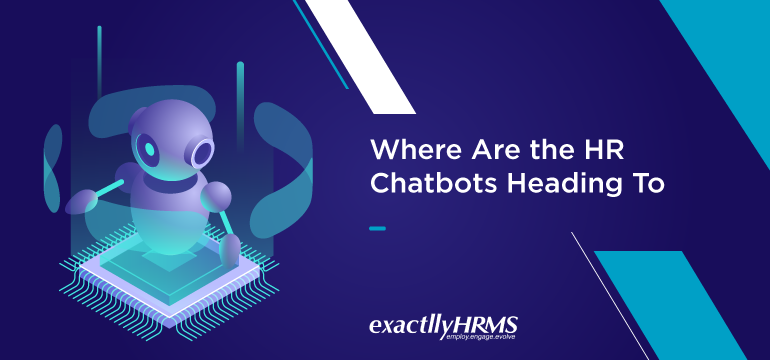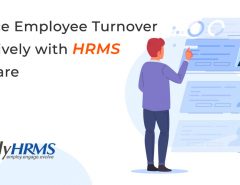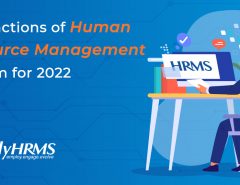HR departments across the world currently use chatbots to fulfill administrative and monotonous tasks. A study conducted by Juniper Research estimated that close to $8 billion could be saved if chatbots are implemented across businesses. Universities, organizations and even the US Army use chatbots to recruit potential applicants. In most cases, chatbots answer applicants' queries and guide them to the right form.
Candidate FAQs are the primary use of chatbots at the moment. Other businesses use chatbots to register candidate experience feedback, so that recruitment experience can be improved. As chatbots reduce the cost of hiring and also present an image of a successful company, there are instances of them being used by companies as an employer branding tool as well. A few others have begun to use chatbots to assist employees to fill up forms and make changes to their profiles in the HRMS.
Where is the change most likely to take place?
However, in the coming months and years, we expect to see a major thrust given to chatbots in the arena of self service. Employee self-service is an established solution that companies use to provide better services to employees, while reducing the costs of the HR department. Chatbots will reduce the costs further and enhance employee experience to unprecedented levels.
In this article, let us take a look at why employee self-service is specifically the target of HR chatbots.
What ails the ESS today?
There are a number of issues that plague employee self-service as we know it today. Most important, self-service solutions do not allow employees to remain completely anonymous or autonomous. As self-service tools are used to register instances of sexual harassment, workplace abuse and other kinds of potentially sensitive matters, employees are not very comfortable revealing their identities. They may also hesitate to speak with their immediate managers, especially if they are the perpetrators themselves. #MeToo movement and emerging trends in social justice have given employees the vocabulary they lacked. They can clearly identify harassment and report when needed. However, they still hesitate to do so because of the inherent stigma attached to these issues. In addition, ESS has a number of issues that cannot simply be wished away:
- Most ESS tools are clunky and are outdated
- They do not offer the autonomy and anonymity that most employees seek
- These solutions still require human intervention, which ultimately defeats the purpose
How do HR chatbots solve this issue?
By definition, HR chatbots use artificial intelligence to understand text input and process that to suggest solutions. They may also be programmed to approve and disapprove forms based on certain criteria. This means, chatbots can easily register complaints and process the nature of these complaints and verify if the amount of workplace harassment. If such instances are verified by the system anonymously, the offender can be addressed immediately, without any human prejudices or biases. In short, chatbots can make workplaces safer and less harassment-prone.
- Chatbots can register and process employee complaints anonymously
- They are unbiased and can verify if a complaint violates existing rules
- There is no room for partiality or judgement, as the tool works independently
- They are quick and seamless, and do not take much time
- Most importantly, chatbots are smart and can offer an enhanced experience to employees.
What else can the chatbots be expected to do in the coming months?
Clearly, chatbots will find themselves indispensable at organizations to handle employee complaints of harassment. However, the coming months will see many more uses for this technology. Let us take a look at two other areas where chatbots are likely to dominate in the coming few months.
1. Assist in employee training
Many organizations find it difficult to create training material and assist employees in gaining more knowledge. While they may hire a content agency to create learning content, an AI-enabled chatbot can assist employees to learn better. This will eliminate the need to hire expensive trainers and teachers, who probably won’t be available 24/7 to answer employees’ queries. Chatbots can answer learning-related queries even after a course or certification has been completed.
2. Provide information and answer queries
One of the most frustrating experiences of any manager is when employees ask them questions repeatedly. These questions are usually inane in nature and can be found out easily if the employee struggled slightly. A chatbot can easily answer such employee queries and free up the time that a manager has to waste on answering queries. In fact, studies project that a number of companies will begin to invest in chatbots simply to answer work-related or other queries pertaining to employees.
Implement chatbots for an efficient and secure workplace
Certainly, chatbots will be used a lot more than we imagined a few months ago, in the HR departments. The most important area of thrust in the coming months will be to make workplaces safer and secure for employees to work. This means, bringing instances of harassment and bullying to notice, with the help of chatbot-enabled complaint registration and verification. In addition, we can also expect chatbots to assist the HR department in employee training and answering regular queries. This will allow the HR department to cut costs and invest the money in more pressing requirements. To learn how chatbots can make your HR department more efficient, contact us today.





Leave a Reply